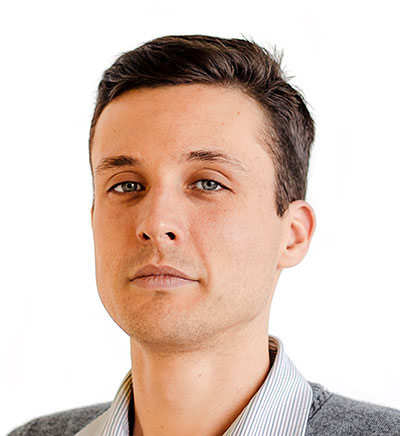
Sonoro Gold Launches Metallurgical Testing
 By Alejandro Ehrenberg | Journalist and Industry Analyst -
Fri, 11/27/2020 - 09:56
By Alejandro Ehrenberg | Journalist and Industry Analyst -
Fri, 11/27/2020 - 09:56
Don't miss Kenneth MacLeod, Sonoro's President & CEO, at Mexico Mining Forum 2021 on February 10-11, 2021. You can find the program and registration here!
Sonoro Gold Corp has secured the services of McClelland Laboratories Inc. to conduct independent metallurgical testing of the gold mineralization at the Cerro Caliche project in Sonora. The Nevada-based laboratories are among the most rigorous in North America and Sonoro’s decision to conduct metallurgical testing speaks to its commitment to advance the project to commercial production. The metallurgical testing scope is greater than what is usually required for a PEA.
As part of Sonoro’s strategy to fast-track the development of a heap leach mining operation (HLMO) at Cerro Caliche, roughly 5.5 tons of mineralized material from 10 85mm-diameter PQ core holes are being shipped to the laboratory for metallurgical testing. With continuing success from the ongoing drilling program, Sonoro’s management has expanded its development plans from the previously announced pilot level project. The company is now assessing the economic viability of a proposed 8,000 ton per day (tpd) mining operation. New drilling suggests the resource is expanding substantially beyond the original 200,000 ounces. Therefore, confidence in doubling initial capacity from 3,950 tpd to 8,000 tpd is optimal.
“Launching the metallurgical testing program represents an important advancement in the development of Cerro Caliche. We are also pleased to have engaged the services of McClelland Laboratories, a widely respected metallurgical testing firm with significant expertise in the successful planning of similar open-pit heap leach mining operations in Sonora,” Kenneth MacLeod, Sonoro’s CEO, said.
Sonoro’s metallurgical testing program is focused on determining the heap leach characteristics of the oxide mineralization at Cerro Caliche. It will provide quantified estimates of gold and silver recovery from the various mineralized zones near surface and at depth. In addition, the metallurgical testing’s scope is sufficient to provide recommendations for crushing sizes and associated process flow sheet development.
The testing will incorporate the following components. First, heap leach testing, including variability composite testing, drill core composite testing, bottle roll testing and column leach testing. Second, materials characterization testing, including comminution testing, mineralogy, load and permeability testing, crushing work index, abrasiveness index and ore density.
Preliminary column leach testing of at-surface mineralized material sampled from the project’s Japoneses Zone was carried out at a dedicated facility near Cerro Caliche by Sonoro in 2019. These tests, designed by a qualified metallurgist, demonstrated the material to be amenable to cyanide leaching, which will now be confirmed by McClelland Laboratories.
The current testing program will take into consideration the gold mineralization’s characteristics. These are divided into two distinct metallurgical domains. First, hydrothermal vein quartz structures of variable thickness, varying from 0.10 to 5m. The vein structures present variable textures, from massive quartz with some vuggy quartz zones to gray quartz. They are mostly related to fault zones with resulting breccias and silicified zones in the hosting rocks: higher grade intercepts are being discovered in these zones.
The second metallurgical domain corresponds to veinlets-stockwork mineralization with relatively lower average gold grades. These are zones with erratic and irregular quartz narrow veinlets varying from 0.01 to 0.20 m width, sometimes with breccia and shatter textures. These veins, veinlets and stockwork are usually in silicified and oxidized zones in the hosting rock and frequently associated with similarly altered rhyolite dikes.
Drilling at Cerro Caliche has shown that the mineralization throughout the various zones is oxidized to the full extent of all the drill holes. Observation of the drill cuttings suggests that the near-surface oxidized mineralization characteristics are similar to the deeper oxidized mineralization. This suggests that no milling will be required and that the mined material will be easy to heap leach.
“Exploration results are confirming Sonoro’s expectations regarding Cerro Caliche’s potential to become another important heap leach mining operation in Sonora,” noted Jorge Diaz, Sonoro’s Vice President of Operations and a professional with a record of designing, constructing and operating a dozen mines in northern Mexico.
The current exploration work is part of Sonoro’s targeted fast-track development schedule for the Cerro Caliche project. The goal is to commence gold production by 4Q21. Achieving this work remains subject to several material conditions: the satisfactory completion of metallurgical testing, securing required environmental permitting, a favorable PEA and the availability of project financing. However, Sonoro’s schedule shows that the goal is highly feasible.
“The engagement of McClelland Laboratories to independently conduct metallurgical testing at Cerro Caliche is a clear and decisive milestone on Sonoro’s fast-track development schedule for commencing gold production by the end of 2021,” John Darch, Sonoro’s Chairman, concluded.
















